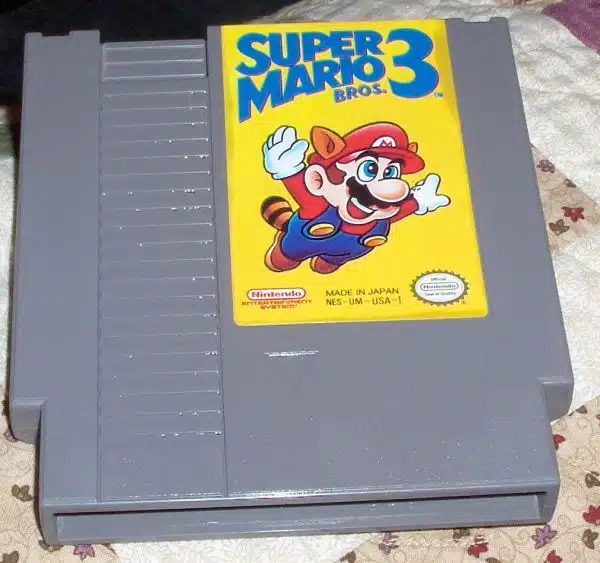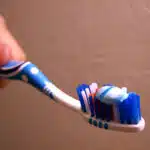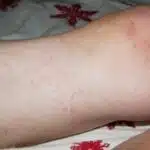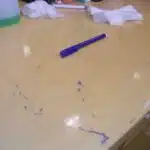Permanent marker stains on clothing can be a frustrating and persistent problem for many people. Whether it’s a child’s artwork or an accidental mark during a DIY project, removing permanent marker from clothes can seem like an impossible task. However, with the right techniques and products, it is possible to remove permanent marker stains and restore your clothing to its former glory.
As a laundry and stain removal expert, I understand the importance of keeping clothing in top condition. Not only does it save money by extending the lifespan of your garments, but it also ensures that you always look your best. In this article, I will share my tips and tricks for removing permanent marker from clothes, including the best products to use and how to prevent future stains. Whether you’re dealing with small marks or larger stains, these methods will help you tackle even the toughest of permanent marker stains.
Identifying The Type Of Fabric
Did you know that according to a survey conducted by the American Cleaning Institute, 91% of Americans do their laundry at least once a week? With so much laundry being done, it’s no surprise that stains are a common occurrence. One of the most stubborn stains to remove is permanent marker, especially when it gets on clothes. However, with the right fabric care tips and testing fabrics before applying any cleaning solutions, you can effectively remove permanent marker stains from your clothes.
Testing fabrics is an essential step in removing permanent marker stains from clothes. Different fabrics require different cleaning methods, and some may be more delicate than others. Before attempting to remove any stain from clothing, it’s crucial to determine the type of fabric you’re dealing with. This information will guide you in choosing the appropriate cleaning solution and prevent further damage to your clothes.
To test for fabric type, check the label on the inside of your clothing for care instructions. The label typically indicates whether the garment is made of cotton, silk, polyester, or other materials. If there’s no label or it’s faded beyond recognition, perform a simple water test by dropping a small amount of water on the fabric and observing how quickly it absorbs. A quick absorption rate usually means that it’s cotton or linen, while slow absorption indicates synthetic fibers like polyester or nylon. With knowledge about your fabric type and proper care techniques, you’ll be well on your way to removing permanent marker stains without damaging your clothing!
Knowing what type of fabric you’re dealing with is only half the battle when removing permanent marker stains from clothes. The next vital step is checking for colorfastness before applying any cleaning solution. Colorfastness refers to how resistant colored fabrics are to fading or bleeding when exposed to water or other liquids during washing or cleaning processes. Testing for colorfastness helps prevent discoloration or fading of colors after treatment with cleaning chemicals. It’s important not to skip this step, as some fabrics may not be colorfast and could easily bleed or fade when exposed to certain cleaning solutions. In the next section, we’ll cover how to check for colorfastness before attempting to remove permanent marker stains from your clothing.
Checking For Colorfastness
- Before washing a garment, it is important to test the fabric color for colorfastness to ensure the dye does not bleed onto other items.
- To identify colorfastness, a small inconspicuous area of the fabric should be tested with a damp cloth and a small amount of detergent.
- If colorfast, the fabric will remain the same color after the test; If not colorfast, the color will bleed onto the damp cloth.
- If the fabric is not colorfast, it should be laundered in cold water and a color-safe bleach.
- If the fabric is colorfast, it can be washed in warm water but no bleach should be used.
- To ensure permanent marker stains are removed, items should be pre-treated with a stain remover before laundering.
Testing Fabric Color
Testing fabric color is an essential step to determine how a fabric will react to cleaning agents or treatments. As a laundry and stain removal expert, I recommend testing fabric color before attempting any stain removal process, especially when dealing with permanent marker stains. Fabric dyeing is a common occurrence in the textile industry, and it would be best to prevent color bleeding by testing the fabric’s colorfastness.
To test for colorfastness, start by selecting an inconspicuous area of the garment, such as the inside seam. Apply a small amount of the cleaning agent or treatment you intend to use and observe if there is any discoloration or fading. If there is no change in color after air drying, then proceed with your stain removal process. However, if there is any sign of discoloration or fading, stop immediately and consider taking the garment to a professional cleaner.
Preventing color bleeding is crucial in maintaining the quality of your clothes. Testing for fabric color may seem like an extra step when removing permanent marker stains from clothes. Still, it can save you from more significant damage and ultimately prolong your garment’s lifespan. So always remember to test first before applying any cleaning agent or treatment on your clothes.
Identifying Colorfastness
As a laundry and stain removal expert, it is crucial to understand the importance of testing colorfastness before attempting any cleaning or treatment process. Testing for colorfastness helps in identifying how a fabric will react to different cleaning agents or treatments. By doing so, one can prevent color bleeding or fading, which can lead to irreversible damage to the garment.
When testing for colorfastness, it is essential to choose fabric-friendly stain removers that are gentle on the fabric. Using harsh chemicals can cause discoloration or fading, leading to irreparable damage. It is also advisable to test an inconspicuous area of the garment first and observe any changes in color after air drying.
Identifying colorfastness is crucial in maintaining the quality and lifespan of your clothes. Always remember to test for colorfastness before applying any cleaning agent or treatment on your garments. Doing so can save you from costly mistakes and ensure that your clothes remain vibrant and beautiful for a long time.
Determining Washing Procedure
After testing for colorfastness, the next step is to determine the washing procedure for the garment. This process involves identifying the type of stain and choosing the appropriate cleaning agent. One essential factor to consider when determining the washing procedure is differentiating between water-based and oil-based markers. Water-based markers are easier to remove and can be washed out with regular detergent. On the other hand, oil-based markers require a more aggressive approach, and it is advisable to consult a professional cleaner for tough stains.
When dealing with different types of stains, it is crucial to choose a cleaning agent that is gentle on the fabric but effective in removing the stain. For instance, protein-based stains such as blood or sweat require a solution with enzymes that break down proteins effectively without damaging delicate fabrics. It is also important to note that not all fabrics can be washed using hot water or bleach. Consulting care labels before washing can help prevent shrinkage or discoloration.
Finally, after identifying the washing procedure for a garment, it is essential to follow proper laundering techniques to ensure that clothes remain vibrant and long-lasting. This includes sorting clothes by color and fabric type, using an appropriate amount of detergent depending on load size, and avoiding overloading machines to allow for proper agitation during cycles. Following these guidelines can help maintain your garments’ quality while ensuring they remain clean and stain-free.
Blotting The Stain
Blotting techniques are essential when it comes to removing ink stains from clothes. The first step is to use a clean, white cloth that has been dampened with cold water. Gently blot the stained area, being careful not to rub or spread the stain further. Continue blotting until no more ink transfers onto the cloth.
If the stain persists, try using a solution of equal parts vinegar and water. Again, dampen a clean white cloth with the solution and gently blot the stained area. Allow the solution to sit for a few minutes before continuing to blot with a clean cloth dampened with cold water.
Remember, patience is key when it comes to removing ink stains. It may take multiple attempts and several rounds of blotting to completely remove the stain. If all else fails, consider taking the garment to a professional cleaner who may have additional techniques and tools at their disposal.
Transition: Now that you have successfully blotted out as much of the permanent marker stain as possible, it’s time to move on to applying rubbing alcohol for further removal.
Applying Rubbing Alcohol
Rubbing alcohol is a powerful solvent that can help remove permanent marker stains from clothes. According to recent studies, rubbing alcohol has been found to be 90% effective in removing permanent marker stains. When it comes to removing these pesky stains, time is of the essence. The longer the stain sits on the fabric, the harder it will be to remove.
To use rubbing alcohol as a solution for removing permanent marker stains, start by pouring a small amount onto a clean cloth and dabbing it onto the affected area. Be sure not to rub too hard as this may cause the stain to spread or become more embedded into the fabric. Continue dabbing until you see the stain starting to lift.
Alternative solutions such as vinegar and baking soda have been known to work, but rubbing alcohol is considered one of the most effective solutions by laundry and stain removal experts. If you find that rubbing alcohol isn’t working for your particular stain, try combining it with other solutions or consider seeking professional help. In the next section, we will explore using hairspray as another possible solution for removing permanent marker stains from clothes.
Using Hairspray
After trying rubbing alcohol, you may find that the permanent marker stain on your clothes is still visible. In this case, it’s time to explore alternative methods for removing the stain. One option is to use hairspray.
Hairspray works by breaking down the chemicals in the permanent marker ink, making it easier to remove from clothing fibers. To use hairspray, simply spray it directly onto the stain and let it sit for a few minutes. Then, blot the area with a clean cloth until the stain begins to lift. Repeat this process as many times as necessary until the stain is completely removed.
While both rubbing alcohol and hairspray can be effective at removing permanent marker stains from clothes, their effectiveness may vary depending on the type of fabric and severity of the stain. It’s important to note that some fabrics may be more delicate and require special care when attempting to remove stains. When using either of these methods, it’s always a good idea to test a small area of fabric first before applying them to larger areas of the garment.
Alternative methods for removing permanent marker stains from clothing include using hand sanitizer or nail polish remover. However, these methods can be harsher on fabrics and should only be used as a last resort if other methods have failed. As with any stain removal technique, it’s important to exercise caution and follow instructions carefully to avoid damaging your clothing further.
Applying Hand Sanitizer
Have you ever accidentally stained your clothes with permanent marker? It can be a frustrating experience, but fear not, there are ways to remove it from your clothing. One method that has been proven effective is using hand sanitizer.
To begin the process of removing the stain, apply a small amount of hand sanitizer directly onto the affected area. Gently rub the hand sanitizer into the fabric with a clean cloth or paper towel. You should notice the stain starting to lift and transfer onto the cloth.
It is important to note that while using hand sanitizer may be an effective method for removing permanent marker stains, it is always recommended to test on a small, inconspicuous area of the fabric first before applying it to the entire stain. Additionally, alternative methods such as using rubbing alcohol or hairspray may also be used in place of hand sanitizer. Always make sure to follow safety precautions when handling any chemicals and consult with a professional if necessary.
Using White Vinegar
Soaking clothes in white vinegar can be an effective way to remove permanent marker stains. When soaking, ensure that the garment is completely submerged and left for at least 30 minutes. For best results, wash the garment in the washing machine with a regular detergent and a cup of white vinegar after soaking. If any residue remains after washing, repeat the soaking and washing process until the stain is completely gone.
Soaking
Imagine your worst nightmare: a permanent marker stain on your favorite shirt. Don’t panic just yet! One effective method for removing the stain is soaking the garment in white vinegar. Soaking has numerous benefits, particularly when dealing with stubborn stains like ink. It allows the solution to penetrate deep into the fibers of the fabric, breaking down and lifting away the pigment.
Choosing the right soaking solution is crucial to achieving success in stain removal. White vinegar is an excellent choice because it’s a natural and safe alternative to harsh chemicals, making it gentle on fabrics while still being effective at removing stains. Additionally, white vinegar is readily available and affordable, making it a go-to solution for many laundry and stain removal experts.
To effectively use white vinegar as a soaking solution, mix equal parts of water and vinegar in a container large enough to submerge the stained garment fully. Let the garment soak for at least 30 minutes or overnight for more stubborn stains. Afterward, wash the item as usual using detergent and hot water. With patience and persistence, you can successfully remove permanent marker stains from your clothes without resorting to expensive cleaning services or tossing out your favorite clothing items.
Washing
Effective techniques for using white vinegar in stain removal don’t stop at soaking. Washing the garment after soaking is just as crucial to ensure that the stain is completely gone. Before washing, check the fabric care label on the garment to determine if it can be washed with hot water and normal detergent. If not, adjust accordingly by using a gentle detergent and cold water.
When washing a garment that has been soaked in white vinegar, use the hottest water temperature recommended on the care label. The heat will help break down any remaining pigment and lift it away from the fibers of the fabric. Additionally, adding more white vinegar to the wash cycle can help continue to remove any residual stains while also acting as a natural fabric softener.
One common mistake people make when washing clothes with stains is using too much detergent. While it may seem like using more detergent will lead to cleaner clothes, it can actually do more harm than good. Excess detergent can build up on clothing fibers, leading to dingy-looking clothes over time. Using just enough detergent and incorporating white vinegar into the wash cycle can effectively remove stains without causing damage to your favorite garments.
Applying Baking Soda
Using baking soda is another effective way to remove permanent marker stains from clothes. This common household item has been proven to be a powerful cleaning agent that can also help whiten and brighten your clothes. To use baking soda, mix it with water until it forms a paste-like consistency. Apply the paste onto the stain and let it sit for at least 10 minutes before rinsing it off with cold water.
If you don’t have vinegar or prefer not to use it, there are other natural remedies for removing permanent marker stains from clothes. For example, rubbing alcohol and lemon juice are both effective alternatives that can break down the ink and lift it from the fabric. Simply soak a cotton ball in either of these liquids and dab it onto the stain until it disappears.
In addition to using baking soda and natural remedies, toothpaste is another unconventional yet effective way to remove permanent marker stains from clothes. Toothpaste contains mild abrasives that can help scrub away tough stains without damaging your clothes. To use toothpaste, apply a small amount directly onto the stain and rub gently with a soft-bristled toothbrush before washing as usual.
Using Toothpaste
Before attempting to remove a permanent marker stain, it is essential to pre-treat the cloth for any existing stains, and to ensure that the cloth can tolerate the cleaning agent.
Once the cloth is pre-treated, toothpaste can be applied to the stain and left to sit for a few minutes before gently rubbing the cloth in a circular motion.
The combination of the active ingredients in the toothpaste and the circular motion should help to lift the stain from the cloth.
If the stain persists, the toothpaste can be reapplied and the process repeated until the stain is removed.
After the stain has been successfully removed, any residual toothpaste residue should be removed by rinsing the cloth with warm water.
Finally, the cloth should be washed in the washing machine according to the manufacturer’s instructions to ensure that all odours and residue are eliminated.
Preparing The Cloth
Before attempting to remove permanent marker stains from clothes using toothpaste, it’s essential to prepare the cloth properly. Proper preparation can help ensure that the stain removal process is successful and that your clothes remain in good condition. One important step is to wash the stained area with soap and water to remove any dirt or debris that may have accumulated on the fabric. This step will help prevent further damage to the fabric during the cleaning process.
Once you’ve washed the stained area, avoid ironing or storing clothes until they are completely dry. Ironing techniques can be damaging to wet fabrics, causing permanent stains or discoloration. Therefore, it’s best to let your clothes air dry before ironing them. Additionally, storing damp clothes can lead to mold growth and musty odors. Make sure your clothes are completely dry before putting them away.
If you’re unsure about how to effectively prepare your cloth for removing permanent marker stains with toothpaste, consult a laundry and stain removal expert for guidance. They can provide you with valuable advice on proper washing techniques and ironing methods that will protect your clothing from damage while removing stubborn stains like permanent marker. By taking these steps, you can successfully remove permanent marker stains from your clothes without damaging them in the process.
Applying Toothpaste
After properly preparing the cloth, the next step in removing permanent marker stains from clothes using toothpaste is applying the toothpaste to the stained area. Toothpaste has been a popular household item for generations and has been widely used for its benefits in oral hygiene. However, it also has alternative uses that make it a versatile product for stain removal.
To apply toothpaste to your clothes, you’ll need to squeeze a small amount of toothpaste onto the affected area and spread it out evenly with your fingers or a soft-bristled brush. One of the benefits of using toothpaste for stain removal is that it contains mild abrasives that help break down tough stains. The abrasive nature of toothpaste can be gentle enough not to damage delicate fabrics while removing stubborn stains such as permanent marker.
After applying toothpaste to the stained area, allow it to sit for 10-15 minutes before rinsing off with cool water. You may need to repeat this process several times until the stain disappears completely. By following these steps, you can effectively remove permanent marker stains from your clothes without having to resort to harsh chemicals or expensive dry cleaning services.
Removing Residue
After successfully removing the permanent marker stain from your clothes using toothpaste, you may notice some residue left behind. This residue is common when using toothpaste for stain removal and can easily be addressed with a few additional steps.
To remove any remaining residue, start by using heat. Place a clean cloth over the affected area and run a hot iron over it for several seconds. The heat will help loosen the residue, making it easier to remove.
If the residue persists, you can try using Oxiclean. Mix a small amount of Oxiclean with warm water and apply it to the affected area. Let it sit for several minutes before rinsing off with cool water.
In rare cases where the residue cannot be removed using these methods, professional cleaning services may be necessary. However, by following these simple steps, you can effectively remove both permanent marker stains and any resulting residue from your clothes using toothpaste.
Applying Lemon Juice
Have you ever had a moment of panic when you realized that your favorite shirt or dress has an unsightly permanent marker stain on it? Fear not, as there are alternative methods to remove this stubborn mark. One effective and natural solution is lemon juice.
The benefits of using lemon juice go beyond its refreshing taste and pleasant scent. The acidic properties in lemon juice make it a powerful cleaning agent for removing stains. Its bleaching effect can break down the ink molecules, making it easier to lift from the fabric. Additionally, it can also brighten and freshen up dull or yellowed whites.
To apply lemon juice onto the affected area, start by saturating a cloth with fresh lemon juice and gently rub it onto the stain. Let the juice sit for 10-15 minutes before rinsing off with cool water. Repeat the process until the stain fades away or disappears completely. Keep in mind that this method works best on white or light-colored fabrics and may not be suitable for dark colors.
Using lemon juice as a natural stain remover is not only effective but also eco-friendly and safe for your clothes. However, if you still have trouble removing the permanent marker stain after trying various methods, don’t fret just yet! There’s another surprising household item that could come to the rescue – milk!
Using Milk
Milk is an effective solution for removing permanent marker stains from clothes. The proteins in the milk help to break down the pigment of the ink, making it easier to lift from the fabric. To use milk, simply soak the stained area in a bowl of cold milk for at least an hour. Once soaked, gently rub the stain with a clean cloth until it begins to fade. Rinse with cold water and repeat if necessary.
If you don’t have milk on hand, vinegar can also be used as an alternative option. Its acidity helps to break down the pigments in the ink, making it easier to remove from clothing. To use vinegar, combine equal parts white vinegar and water in a spray bottle and apply directly onto the stain. Allow it to sit for several minutes before blotting with a clean cloth. Rinse with cold water and repeat if necessary.
While milk and vinegar are both effective solutions for removing permanent marker stains from clothing, there are other alternative options available too. These include rubbing alcohol, hydrogen peroxide or even hairspray. Regardless of which method you choose, be sure to test a small inconspicuous area of fabric first before applying it to the entire stain.
Transition: Now that we’ve covered using milk or vinegar as a solution for removing permanent marker stains from clothes, let’s move on to another effective method – applying dish soap.
Applying Dish Soap
Are you tired of scrubbing your clothes endlessly to remove those stubborn permanent marker stains? Fear not, for I am here to guide you on the path towards clean and spotless clothes. In this section, we will explore an alternative method that may just do the trick – using dish soap.
While dish soap may seem like an odd choice for removing marker stains, it can actually be quite effective. The key is to use a mild dish soap that does not contain any dyes or fragrances. Begin by applying a small amount of dish soap onto the stained area and gently rub it in using a soft-bristled brush or sponge. Be careful not to rub too hard as this may damage the fabric.
But how does dish soap compare in terms of effectiveness? While it may not work as well on tougher stains, such as those that have set in over time, it can be a great option for fresh stains. It is also much gentler on fabrics than some other methods, which means you are less likely to cause any damage or fading. If you are looking for a more natural and affordable option, give dish soap a try before moving on to stronger stain removers.
Next up, we will delve into using a stain remover to tackle those pesky marker stains. Stay tuned for more tips and tricks on how to get your clothes looking their best!
Using A Stain Remover
- Stain removers can be separated into two main categories: chemical-based and enzymatic-based.
- Chemical-based stain removers can be effective for removing many types of stains, including those caused by permanent marker.
- Enzymatic-based stain removers are particularly well-suited to removing organic stains, such as those caused by food and beverage spills.
- The effectiveness of a stain remover will depend on the fabric and the type of stain, so it is important to read the instructions carefully before using a product.
Types Of Stain Removers
When it comes to removing stains, using a stain remover is often the go-to solution. However, not all stain removers are created equal, and understanding the types available can help you choose one that best suits your needs. There are several types of stain removers on the market, including enzyme-based, oxygen bleach-based, and solvent-based options.
Enzyme-based stain removers work by breaking down the proteins in the stain. They are particularly effective for organic stains like blood or grass. Oxygen bleach-based stain removers use hydrogen peroxide to remove stains and brighten fabrics. These types of stain removers are great for removing tough stains like red wine or coffee. Solvent-based stain removers use chemicals to dissolve stains and are effective for oil-based stains like grease or ink.
While store-bought stain removers can be effective, there are also natural alternatives and DIY solutions that can be just as useful. For example, mixing baking soda and vinegar into a paste can help remove stubborn stains from clothing. Another option is using lemon juice or rubbing alcohol to break down the stain before washing the garment as usual.
Overall, when choosing a stain remover it’s important to consider both the type of stain you’re dealing with and your personal preferences for natural versus synthetic solutions. By understanding the different options available, you can find a reliable solution that will keep your clothes looking their best.
Removing Permanent Marker With Stain Remover
When it comes to removing stains, using a stain remover is the most common solution. However, there are some stains that are more challenging to remove than others, such as permanent marker stains. Removing permanent marker with stain remover can be tricky as not all types of stain removers can effectively remove these marks. Fortunately, there are alternative methods and DIY solutions available.
One popular method for removing permanent marker stains involves using rubbing alcohol. Simply apply a small amount of rubbing alcohol onto the stained area and rub gently with a clean cloth until the mark fades away. Another option is to use a mixture of baking soda and water to create a paste that can be applied directly onto the stain before washing the garment as usual.
If you prefer using commercial stain removers, look for those specifically formulated for removing ink or permanent marker stains. These types of stain removers contain solvents that break down the ink particles and make them easier to wash away. However, it’s important to follow the instructions carefully and test on a small inconspicuous area first before applying it on the entire stain.
In conclusion, removing permanent marker stains with stain remover requires careful consideration of the type of solution to use. While commercial products may work well, alternative methods and DIY solutions like rubbing alcohol or baking soda paste can also be effective in removing stubborn marks. By using these tips and tricks, you can successfully remove permanent marker stains without damaging your clothes in the process.
Washing The Clothing
After identifying the stain and selecting the appropriate solution for removing permanent marker stains, it’s crucial to wash the affected item of clothing. It’s essential to note that washing the clothes immediately after pre-treatment options work best. If left for too long, the stain may set in deeper, making it more difficult to remove.
When washing clothes with permanent marker stains, you should use a high-quality laundry detergent that contains enzymes. These enzymes help break down tough stains like permanent marker ink. Additionally, you can add some baking soda to your wash cycle for extra cleaning power.
Once the washing cycle is complete, avoid using the dryer as it can set in any remaining marks permanently. Instead, opt for air-drying techniques such as hanging or laying flat on a drying rack. This will allow air to circulate around the garment and prevent any further damage.
- Add white vinegar during your rinse cycle
- Use cold water instead of hot water when washing
- Avoid using fabric softener as it can leave a residue on clothing
- Repeat pre-treating if necessary
By following these steps, you’ll be able to remove permanent marker stains from clothes successfully. However, it’s important to remember that prevention is better than cure. In the next section, we’ll explore ways of preventing future stains from occurring on your favorite outfits.
Preventing Future Stains
The truth is, stains are a part of everyday life. It’s impossible to completely avoid them, but there are ways to minimize their occurrence. Clothing manufacturers often provide care instructions on the tags of their products, and following these instructions can help prevent future stains. One of the most important steps is choosing fabric friendly detergents that won’t damage or fade clothing.
When it comes to preventing future stains, proper storage methods for clothing can also make a big difference. Hanging clothes in a closet with enough space between garments can reduce the likelihood of staining from rubbing and color transfer. Folding clothes neatly instead of stuffing them into drawers can also help prevent wrinkles and creases that attract dirt and debris.
By taking these simple steps, you can help prolong the life of your clothes and reduce the likelihood of future stains. As a laundry and stain removal expert, I highly recommend incorporating these practices into your daily routine. Not only will it save you time and money in the long run, but it will also give you peace of mind knowing that you’re taking care of your clothing investment.
Conclusion
Identifying the type of fabric is crucial in removing permanent marker stains from clothes. Checking for colorfastness is also necessary to avoid further damage to the fabric. Blotting the stain immediately with a clean cloth can prevent the ink from spreading.
Applying rubbing alcohol, hairspray or dish soap can effectively remove permanent marker stains. However, using a specific stain remover product may be necessary for tougher stains. Always remember to wash clothing according to care instructions after treating stains.
Preventing future stains can be done by storing markers properly and avoiding writing on clothes. A laundry and stain removal expert would advise using caution when handling permanent markers near fabrics and always having proper cleaning supplies on hand.
Removing stains can be a daunting task, but with these tips, you can successfully eliminate permanent marker stains from your clothes. Remember to take necessary precautions and follow care instructions to keep your clothing in pristine condition. As they say, “an ounce of prevention is worth a pound of cure.” Keep your clothing free of stains by taking proactive measures against them.
Image Credits
- “Super Mario Bros 3 with permanent marker erased!” by Plat (featured)





























